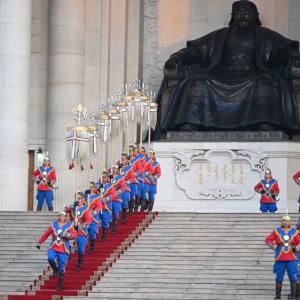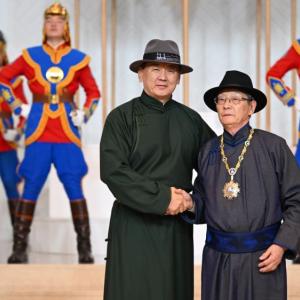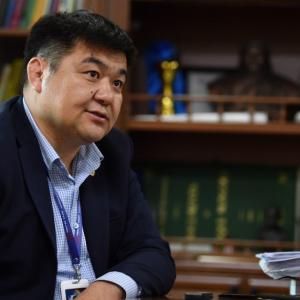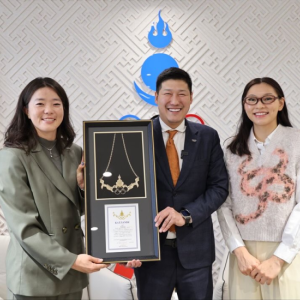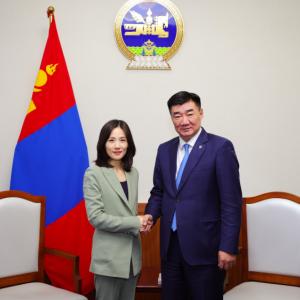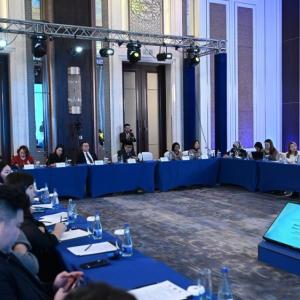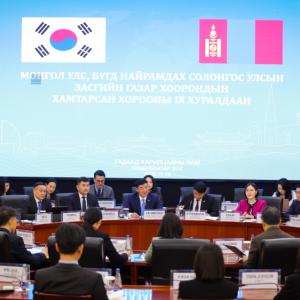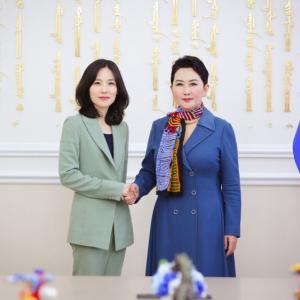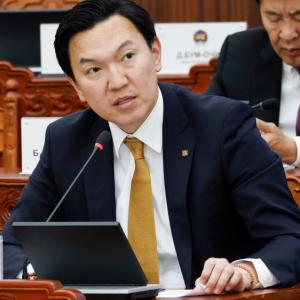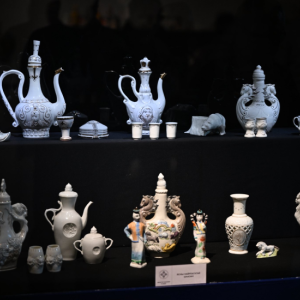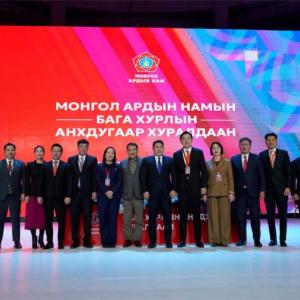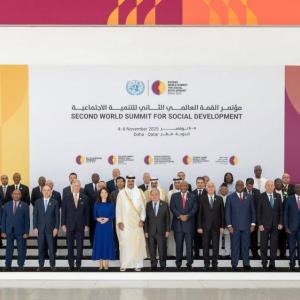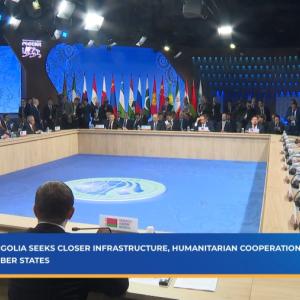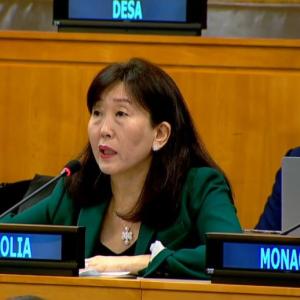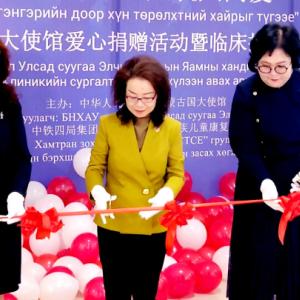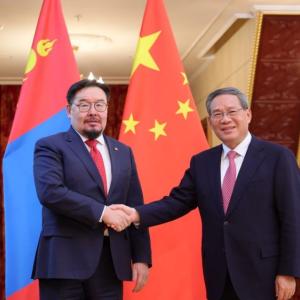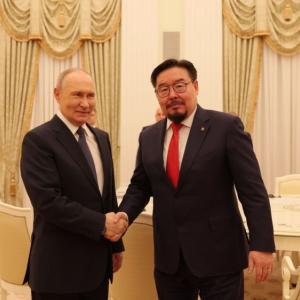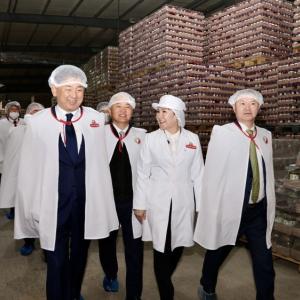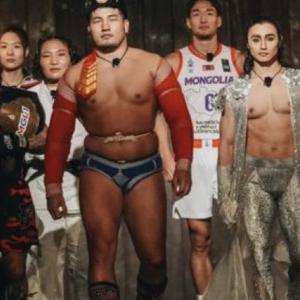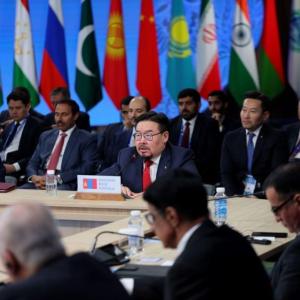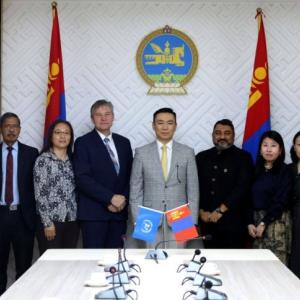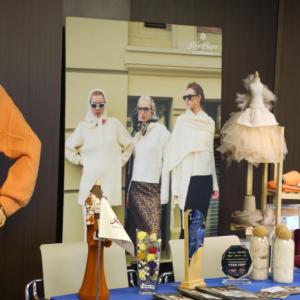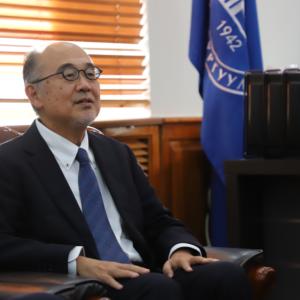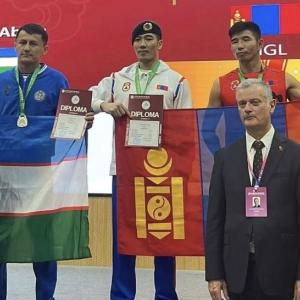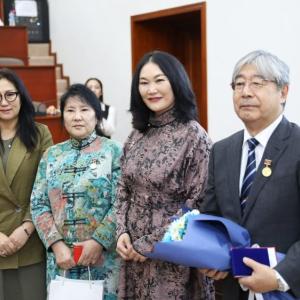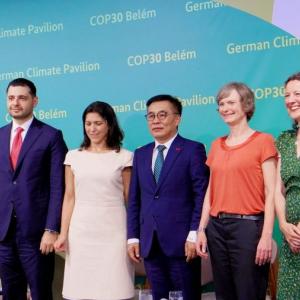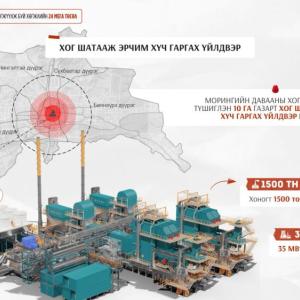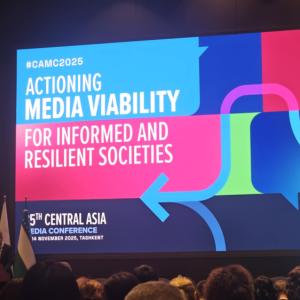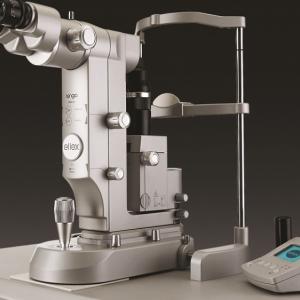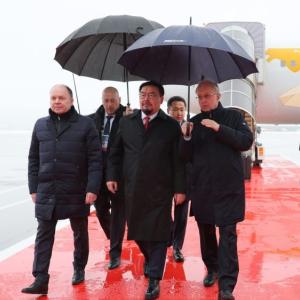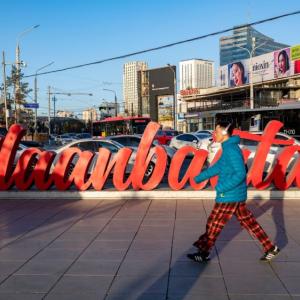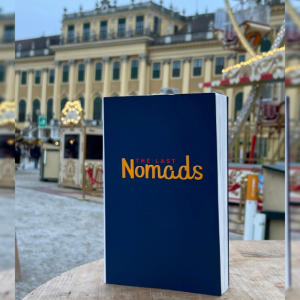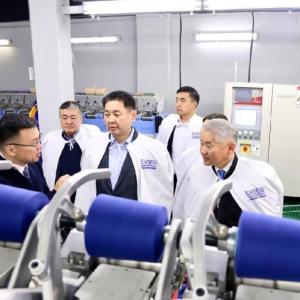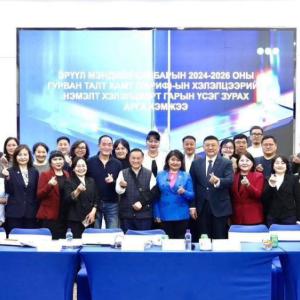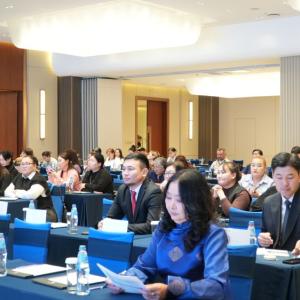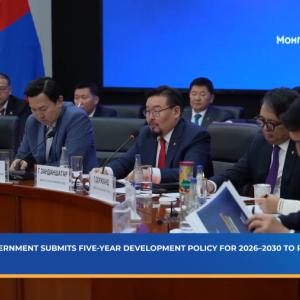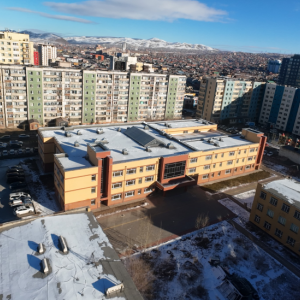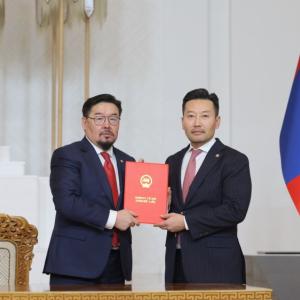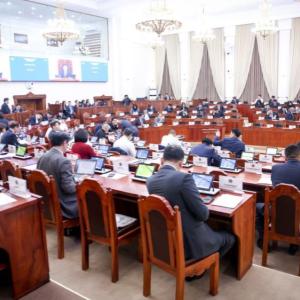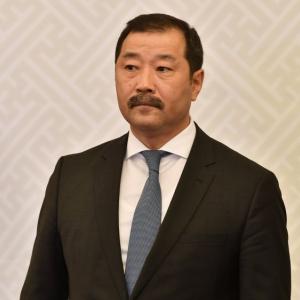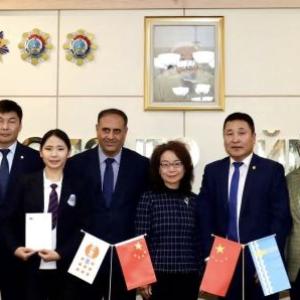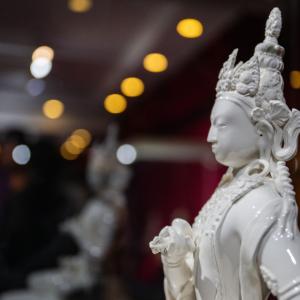Traditional Mongolian Medicine dates back to 3000 BCE
The Mongol Messenger“Traditional Mongolian Medicine is a priceless heritage we inherited from our ancestors; and seeing as it’s a highly unique practice, Mongolians need to safeguard, disseminate and pass it down from generation to generation,” said academician Sharaviin Bold (Professor, Ph.D., Sc.D). He has been teaching traditional medicine since he graduated from the National Medical University of Mongolia in 1993. His total publications count about 540, including around 60 books and more than 300 academic articles. Specializing in Traditional Mongolian Medicine and its history, academician Bold put the subject in a new light. We’ve interviewed to him learn about and highlight some of his contributions to Traditional Mongolian Medicine and its development.
When did you start studying Traditional Mongolian Medicine and why?
When I was a student at the National Medical University of Mongolia, our study only dwelled only Western medicine and theories. I easily noticed the absence of Traditional Mongolian Medicine and its origin and wondered whether Mongolians had contributed to medical science or not. Though I was in a dental program, I shifted my attention to Traditional Mongolian Medicine and started learning Tibetan. Then, I found a Tibetan Self-Study written by Ts.Dorj but its reference was written in old Traditional Mongolian script. So I had to study the script if I wanted to read the text book. Knowledge of traditional Mongolian script and Tibetan enabled me to study Traditional Mongolian Medicine in deeper context.
Any research, especially historical study must require broad lingual knowledge. How many languages do you know?
It’s hard to say that I know these languages very well. But I can name English, Russian, and Tibetan. It is only fair to say that I don’t need translator’s help when I encounter books or sutras written in these languages during the research process. I also took interest in Manchu language and Sanskrit which are not commonly used but very important in the study of traditional medicine. I studied traditional Mongolian script by myself in the late 80s. I am not good at writing it, but I can read any book even ancient sutras.
Can you introduce your book ‘History and Development of Traditional Mongolian Medicine’?
I was very close with Korean doctors with whom I discussed Traditional Mongolian Medicine. Eventually, they asked for a book with more detail. However, there weren’t any English publications on the subject at that time. They told me, “If you can write a book about Traditional Mongolian Medicine in English, we will translate it into Korean”. So I decided to rise to the occasion and wrote a draft which was edited by my friend Susan Holden. We published 1000 copies of the first edition in 2002 and it sold out in a very short time. Later in 2006, I earned a doctorate degree in Medical Science and I published the second edition adding new findings. Finally in 2013, the third edition was printed with the support of the Science, Technological Foundation, Ministry of Education, Culture and Science. The Mongolian version can be found in four-volumes under the name ‘History of Mongolian Medicine’.
In the book, you wrote that Traditional Mongolian Medicine is 5000 years old. Can you validate that assertion?
My assertion is based on two sources- archeological findings and historical sources. The Study of history is very difficult as truth is easily tainted. For example, people called Chandmanis lived in Mount Chandmani of Uvs Aimag more than 2000 years ago. Unearthed findings of these people exposed bones and skulls which bore signs of trepanation were revealed during the study of Mongolian paleo-pathologists. But the purpose of the trepanation, either medical or religious wasn’t certain. So I investigated through the relevant Tibetan and Chinese sources and collected data on Traditional Mongolian Medicine. In the ‘History of Tibetan Medicine’ by Tibetan scholar Desrid Sanjaajamts, I read that Khor (term that defines the nomads of Central Asia) people, ancestors of Mongolians performed brain surgery using 35 different methods. It was a huge discovery. I concluded that brain surgery was performed by Khor Mongolians more than 2000 years ago and the skull bone remains were proof. More interesting remains like cochleare, piercer and needles made of bone were unearthed in Mongolia.
Another example, remains of Neolithic Age, unearthed in Mongolia showed that needles made of stone were used in 3000 BCE. It means that the needle is from 5000 years ago. Traditional Chinese medicine is also around 5000 years old and there are Chinese sources on an object named bionstone. I studied the bionstone to find that it is very similar to the stone needle found in Mongolia. As Mongolia and China are neighbors, I believe cultural and material exchange were inevitable. So, I concluded that the ancestors of both Chinese and Mongolian people used the bian stones or stone needles for various treatment purposes. Generally, the earliest written sources of Mongolian history are from the 13th century. Historic facts before that period can only be found in ancient Chinese and Tibetan sutras.
How does Mongolian medicine differ from eastern medicine practiced in countries like China, Japan and Korea?
It’s the medicine of nomads. Diet, attire and lifestyle of nomads are very different from those of other Asian countries. Naturally, nomads’ medicine had to be somewhat different. For instance, there is concussion. The diagnosis and treatment method of concussion with concussion only belongs to the medicine of nomads. I studied in a Tibetan Medical & Astro Institute in Dharamsala, India in 1993-1994. An Indian boy who had fallen from the second floor of a building was brought in, and the Tibetan doctor prescribed him with some tablets after performing pulse diagnosis. So I asked him, “It’s a concussion. Isn’t acuclosure the most appropriate treatment in this case?” But he didn’t know what concussion was and how to treat it with acuclosure. So apparently some knowledge only belonged to Traditional Mongolian Medicine. Moreover, we found evidence that acuclosure was practiced in Mongolia 2000 years ago among the bone remains found at Mount Chandmani. Also, some Xiongnu remains proved that Xiongnus used tootbrush and toothpick. Ancestors of Mongolians were not as uncivilized as most people imagine.
Basically, there are numerous treatments that only nomads used such as acuclosure treatment, food treatment and tsegee zasal (practice of drinking a beverage made of horse milk) which are all associated with the nomadic lifestyle. Mongolians got all the protein and vitamins from the meat they ate because Mongolian livestock eat various herbs and wild plants. We use shar suu (yellow milk) for gall-bladder cleanse and milk for various allergies. Moxibustion is a product of Traditional Mongolian Medicine. It was written in a very ancient report on Traditional Mongolian Medicine and noted in the "Huangdi-Neijing" from 2000 years ago that “Moxibustion came from the North”. North of China where, Mongolian nomads lived for thousands of years. I just want to note that thousands of examples can be pointed out in this matter.
How do you compare traditional medicine and modern medicine?
Modern medicine is strongly equipped with devices and instruments which give it an advantage in treating acute illness, where in traditional medicine, the doctor has to rely on his knowledge and will. In my opinion, traditional medicine has its advantages when it comes to chronic disease. The doctor can diagnose with pulse, urine and further examination of organs - eyes, tongue, ears, nose, lips and skin. But I reckon a new medicine which combines modern and traditional medicine will emerge soon. I believe that the matter of integrated medicine is very important and a practical approach is needed rather than the theoretical to intensify the effectiveness of the treatment. I’ve had an opportunity to do an internship at a Tibetan hospital in Lhasa and witness the example of combined treatment of both traditional and modern medicine on a patient who was unconscious due to extravasation.
How do you see the future of Traditional Mongolian Medicine?
It’s a miracle that there are 7 traditional medicine universities and colleges in Mongolia. A traditional medicine department is operating in every clinic and district hospital while aimags (provinces) and soums (villages) hospitals at least have a traditional medicine practitioner. This is a very good approach and this should continue. Frankly, modern medicine in Mongolia is not developing as quickly as global medicine, but there’s a way to align with or even outpace it by making use of Traditional Mongolian Medicine. Traditional Mongolian medicine is a unique practice and we have to use it to boost Mongolian medicine. The State policy on Traditional Mongolian Medicine is being renewed this year as the 15-year plan has been completed in 2015. I worked as secretary for the project team when the first plan was adopted. This year, a working group has been formed to draft the next plan and I’m told I’m a member of the working group. The next government is to discuss and hopefully approve the next phase of state policy on Traditional Mongolian Medicine.
You must have amassed rich experiences and a huge collection of books after 23 years of research?
My personal library is my only pride. I started collecting books since I was a student. In my younger age, I often went to the National Library or Natsagdorj’s Library; but now I don’t have to go to any other library because all my needs are in my own library which has about 2000-3000 books, sutras and scripts. I have books those public libraries don’t have. I even have a book that is the only copy in Mongolia. In my possession, I have a sutra about traditional medicine which was translated by the order of Ligden Khaan, the last of Chinggis Khaan’s descendants. Also, I value my ‘Four Medical Tantras’ and have frequently travelled to India and China including Inner Mongolia Autonomous Region and Tibet Autonomous region.
What is your dearest ambition?
Let me tell you how ambitious I am. When I was studying dentistry, I used to tell my classmates that I would someday write a book about the history of Traditional Mongolian Medicine and they would laugh at me saying, “Just become a good dentist”. In the context of 1990, raising the issue of history of Traditional Mongolian Medicine was seen as unfamiliar. I was that ambitious. I would ask them, “What if I write it in English?” Bear in mind that one has to determine big goals and strive to achieve it. My teachers used to scold me saying, “You have to think like a student instead of speaking of big things”. I eventually wrote the book and from today’s angle, my short-term goal is to write a book about traditional Xiongnu medicine. As for my long-term goal, I wish to promote my research works globally. For example, I wish to publish a book that contains selective and effective prescriptions from Traditional Medicine in English language. And yes, it is my ambition to develop and spread traditional Mongolian medicine to the level where not only is it used in Mongolia, but makes a valuable contribution to world medicine. Seven billion people can benefit from Traditional Mongolian Medicine if possible.
Kh.Aminaa
The interview is featured in the Mongol Messenger's issue for May 18, No 19.
 Ulaanbaatar
Ulaanbaatar





